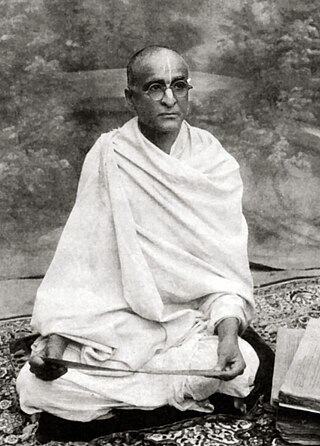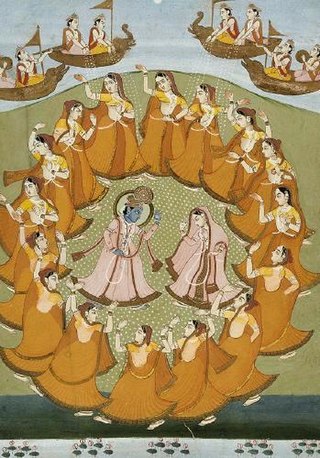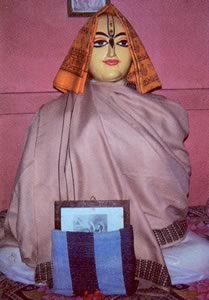A monastery is a building or complex of buildings comprising the domestic quarters and workplaces of monastics, monks or nuns, whether living in communities or alone (hermits). A monastery generally includes a place reserved for prayer which may be a chapel, church, or temple, and may also serve as an oratory, or in the case of communities anything from a single building housing only one senior and two or three junior monks or nuns, to vast complexes and estates housing tens or hundreds. A monastery complex typically comprises a number of buildings which include a church, dormitory, cloister, refectory, library, balneary and infirmary, and outlying granges. Depending on the location, the monastic order and the occupation of its inhabitants, the complex may also include a wide range of buildings that facilitate self-sufficiency and service to the community. These may include a hospice, a school, and a range of agricultural and manufacturing buildings such as a barn, a forge, or a brewery.

Chaitanya Mahaprabhu, born Vishvambhara Mishra, was an Indian Hindu saint from Bengal and the founder of Gaudiya Vaishnavism. Chaitanya Mahaprabhu's mode of worshipping Krishna with bhajan-kirtan and dance had a profound effect on Vaishnavism in Bengal.

Bhaktisiddhanta Sarasvati, born Bimala Prasad Datt, was an Indian Gaudīya Vaisnava Hindu guru, ācārya, and revivalist in early twentieth-century India. To his followers, he was known as Srila Prabhupāda.

Gaudiya Vaishnavism, also known as Chaitanya Vaishnavism, is a Vaishnava Hindu religious movement inspired by Chaitanya Mahaprabhu (1486–1534) in India. "Gaudiya" refers to the Gaura or Gauḍa region of Bengal, with Vaishnavism meaning "the worship of Vishnu". Specifically, it is part of Krishnaism—Krishna-centric Vaishnavite traditions.

A matha, also written as math, muth, mutth, mutt, or mut, is a Sanskrit word that means 'institute or college', and it also refers to a monastery in Hinduism. An alternative term for such a monastery is adheenam. The earliest epigraphical evidence for mathas related to Hindu-temples comes from the 7th to 10th century CE.
Swami Sadananda Das was born as Ernst-Georg Schulze in Germany. He met Swami Bhakti Hridaya Bon, a disciple of Hindu spiritual reformer Bhaktisiddhanta Sarasvati Thakura. Sadananda received diksa or formal initiation into the Gaudiya Vaishnava tradition through Swami Bon from Sarasvati, and later received the name Sadananda Das by Sarasvati directly after he had joined the Gaudiya Mission in Calcutta, India. He was one of the first known individuals who was not of Asian origin to embrace the Gaudiya Vaishnava tradition.

The Ramanandi, also known as Ramavats, is one of the largest sects of Vaishnavas. Out of 52 sub-branches of Vaishnavism, divided into four Vaishnava sampradayas, 36 are held by the Ramanandi. The sect mainly emphasizes the worship of Rama, Sita, Hanuman, and the avatars of Vishnu. They consider Rama and Sita as the Supreme Absolute who are not different from each other. It is considered to have been founded by Ramananda, a 14th-century Vaishnava saint.

Alagiya Manavalan, best known by his epithet Manavala Mamunigallit. 'The great saint, Manavalan' (1370–1450), was a Hindu theologian. He was a major proponent of the Sri Vaishnavism tradition in the 15th century in Tamilakam, disseminating it with the help of his eight disciples. The disciples of Manavalan established places of learning to teach the Vishishtadvaita philosophy in Tamilakam.

Radha-Krishna is the combined form of the Hindu god Krishna with his chief consort and shakti Radha. They are regarded as the feminine as well as the masculine realities of God, in several Krishnaite traditions of Vaishnavism.
The Shri Guru Charitra is a book based on the life of Shri Nrusimha Saraswati, written by the 15th-16th century poet Shri Saraswati Gangadhar.

Vaishnavism is one of the major Hindu denominations along with Shaivism, Shaktism, and Smartism. It is also called Vishnuism since it considers Vishnu as the sole supreme being leading all other Hindu deities, that is, Mahavishnu. Its followers are called Vaishnavites or Vaishnavas, and it includes sub-sects like Krishnaism and Ramaism, which consider Krishna and Rama as the supreme beings respectively. According to a 2010 estimate by Johnson and Grim, Vaishnavism is the largest Hindu sect, constituting about 641 million or 67.6% of Hindus.

Sri Vaishnavism is a denomination within the Vaishnavism tradition of Hinduism, predominantly practiced in South India. The name refers to goddess Lakshmi, as well as a prefix that means "sacred, revered", and the god Vishnu, who are together revered in this tradition.

Krishnaism is a term used in scholarly circles to describe large group of independent Hindu traditions—sampradayas related to Vaishnavism—that center on the devotion to Krishna as Svayam Bhagavan, Ishvara, Para Brahman, who is the source of all reality, not simply an avatar of Vishnu. This is its difference from such Vaishnavite groupings as Sri Vaishnavism, Sadh Vaishnavism, Ramaism, Radhaism, Sitaism etc. There is also a personal Krishnaism, that is devotion to Krishna outside of any tradition and community, as in the case of the saint-poet Meera Bai. Leading scholars do not define Krishnaism as a suborder or offshoot of Vaishnavism, considering it at least a parallel and no less ancient current of Hinduism.

The Nimbarka Sampradaya, also known as the Kumāra Sampradāya, Hamsa Sampradāya, and Sanakādi Sampradāya, is one of the four Vaiṣṇava Sampradāyas. It was founded by Nimbarka, a Telugu Brahmin yogi and philosopher. It propounds the Vaishnava Bhedabheda theology of Dvaitadvaita (dvaita-advaita) or dualistic non-dualism. Dvaitadvaita states that humans are both different and non-different from Isvara, God or Supreme Being. Specifically, this Sampradaya is a part of Krishnaism—Krishna-centric traditions.

The Raslila, also rendered the Rasalila or the Ras dance, is part of a traditional story described in Hindu texts such as the Bhagavata Purana and Gita Govinda, where Krishna dances with Radha and the gopis of Braj. Rasalila has also been a popular theme for other India classical dances including Bharatanatyam, Odissi, Manipuri Raas Leela, Kuchipudi, and Kathak.

Haridasa Thakur was a Vaishnava saint known for playing a part in the initial propagation of Gaudiya Vaishnavism. He is considered to be a known convert of Chaitanya Mahaprabhu, along with Rupa Goswami and Sanatana Goswami. His story of integrity and faith in the face of adversity is told in the Chaitanya Charitamrita. It is believed that Chaitanya Mahaprabhu himself designated Haridasa as nāmācarya, meaning the 'teacher of the Name'. Haridasa Thakura was a devotee of the deity Krishna, and is regarded to have practised the chant of his veneration, the Hare Krishna mantra, 300,000 times daily.

Ramdas Kathiababa was a Hindu Spiritual leader of the Dvaitadvaita Nimbarka Sampradaya the 54th Acharya of the Nimbarka Sampradaya Sri Sri 108 Swami Ramdas Kathia Babaji Maharaj was known everywhere as Kathia Baba. He was born about two hundred years ago in the village of Lonachamari in the state of Punjab.
Bhara is a village in the Bishnupur CD block in the Bishnupur subdivision of the Bankura district in the state of West Bengal, India.

Mahanam Sampradaya is a monastic organisation founded in the last decade of the 19th century within Hinduism in the Bengal Presidency of colonial British India and spiritually inspired by Prabhu Jagadbandhu. As the tradition-sampradaya is also known as a Krishnaite institution and it was formed in the early 20th century by Sripad Mahendraji. Presently followers of Mahanam Sampradaya are centered in both India and Bangladesh. Radha Krishna, Gaur Nitai and Prabhu Jagadbandhu are the chief deities worshiped by the Mahanam Sampradaya.

Bairagi Brahmin or Vaishnav Bairagi or Vaishnav Brahmin is a Hindu caste. They are Hindu priests. They are sedentary rasik Brahmin members of the Vaishnava sampradayas, especially the Ramanandi Sampradaya. According to K.S. Singh, the community uses different Surnames/Titles in different States and union territories of India, these are - Swami, Bairagi, Mahanta, Maharaj, Vaishnav, Bawa, Pandit, Purohit, Goswami, Sharma, Adhikari and Vairagi. They are Vaishnav, and wear the sacred thread. A majority of Bairagi Brahmin is found in Uttar Pradesh, Bihar, Jharkhand, West Bengal, Assam, and Odisha. Bairagi are considered as part of the 'upper castes' of Bengal.



















